The Forbidden City, located in the heart of Beijing, China, is one of the most iconic and historically significant landmarks in the world. As the largest palace complex on the planet, it represents the pinnacle of Chinese architectural achievement and imperial power. For nearly 500 years, this vast fortress was the home of 24 emperors from the Ming and Qing Dynasties, as well as the political and ceremonial center of the Chinese government. Today, it stands as a UNESCO World Heritage site and a must-see destination for travelers eager to explore China’s rich history and culture.
In this article, we will dive into the essential facts about the Forbidden City, its significance in Chinese history, and everything you need to know about visiting this majestic site, including entry fees, opening hours, how to navigate it, and tips for making the most of your visit.
A Brief History of the Forbidden City

Construction of the Forbidden City began in 1406 during the reign of the Yongle Emperor, the third emperor of the Ming Dynasty, and took 14 years to complete. It was designed to serve as the emperor’s residence and the center of Chinese governance, symbolizing the emperor’s authority as the Son of Heaven. The Forbidden City was named because access to it was highly restricted; only the emperor, his close family, and his court could enter. Ordinary citizens were barred from crossing its grand walls, hence the name “Forbidden.”
The complex was not just a palace but a microcosmic city with over 9,000 rooms and buildings covering 180 acres (72 hectares). It was divided into two primary sections: the Outer Court, where the emperor conducted state affairs, and the Inner Court, which was reserved for the emperor’s private life and his family.
For centuries, this enormous palace complex was a symbol of Chinese imperial power and dynastic rule. It served as the home of emperors until the fall of the Qing Dynasty in 1912, after which the Forbidden City became a museum. In 1925, it was officially opened to the public as the Palace Museum.
Architectural Marvel of the Forbidden City

One of the most fascinating aspects of the Forbidden City is its architecture, which adheres to the principles of traditional Chinese palace design. The complex is meticulously aligned with ancient Chinese cosmology, feng shui, and Confucian ideology, making it a powerful representation of harmony and balance.
The Forbidden City is surrounded by a 10-meter-high wall and a 52-meter-wide moat, emphasizing its fortified nature. There are four main gates, with the Meridian Gate (Wu Men) serving as the grand entrance to the south. The palace’s layout follows a strict north-south axis, symbolizing the emperor’s role as a mediator between heaven and earth.
The complex’s main structures include the Hall of Supreme Harmony, the Hall of Central Harmony, and the Hall of Preserving Harmony. These buildings are adorned with intricate designs and symbolic motifs, from dragons and phoenixes to depictions of clouds and lotus flowers. The yellow glazed roof tiles, a symbol of the emperor’s power, are a defining feature of the Forbidden City’s majestic appearance.
Tourism Facts and Key Information for Visitors
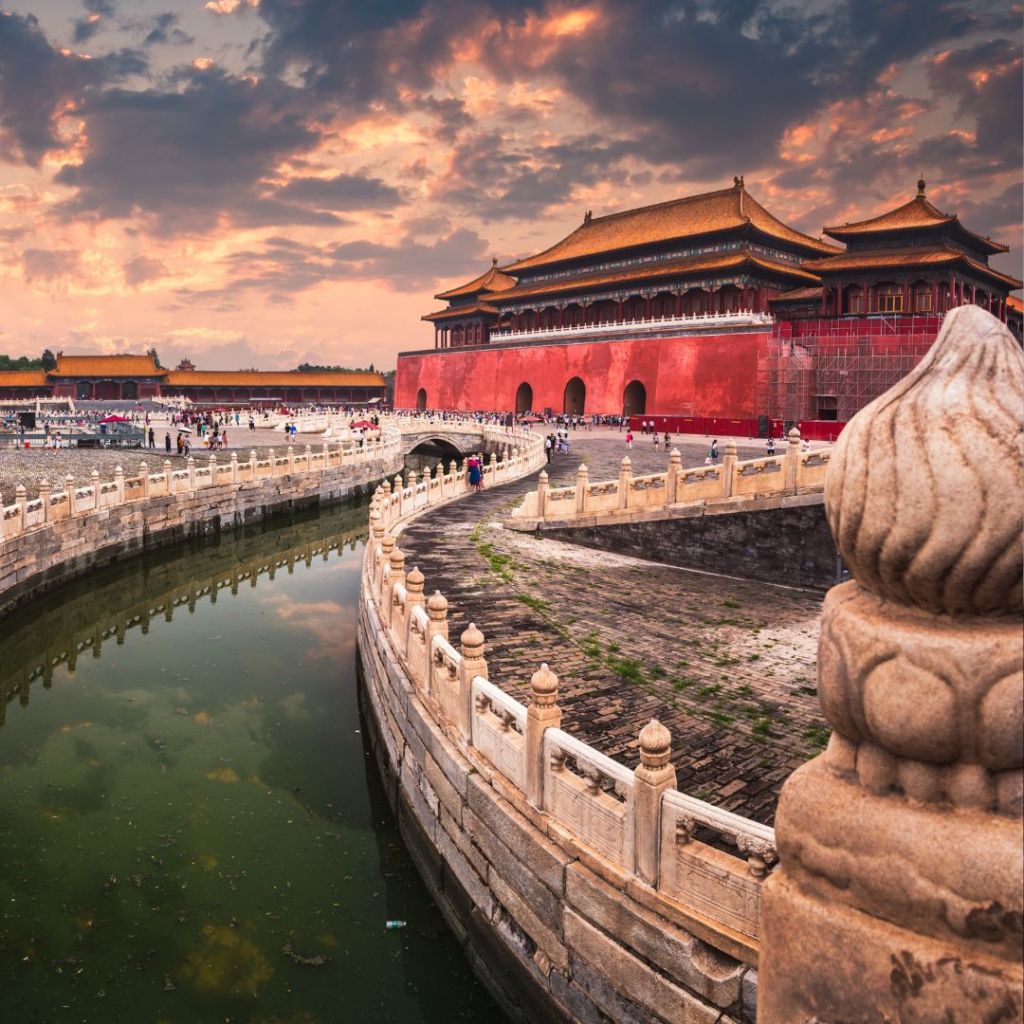
Visiting the Forbidden City is an immersive experience that transports you back to the days of China’s imperial past. Below, we outline the key tourism facts and practical information that you need to know before planning your trip.
1. Location and How to Get There
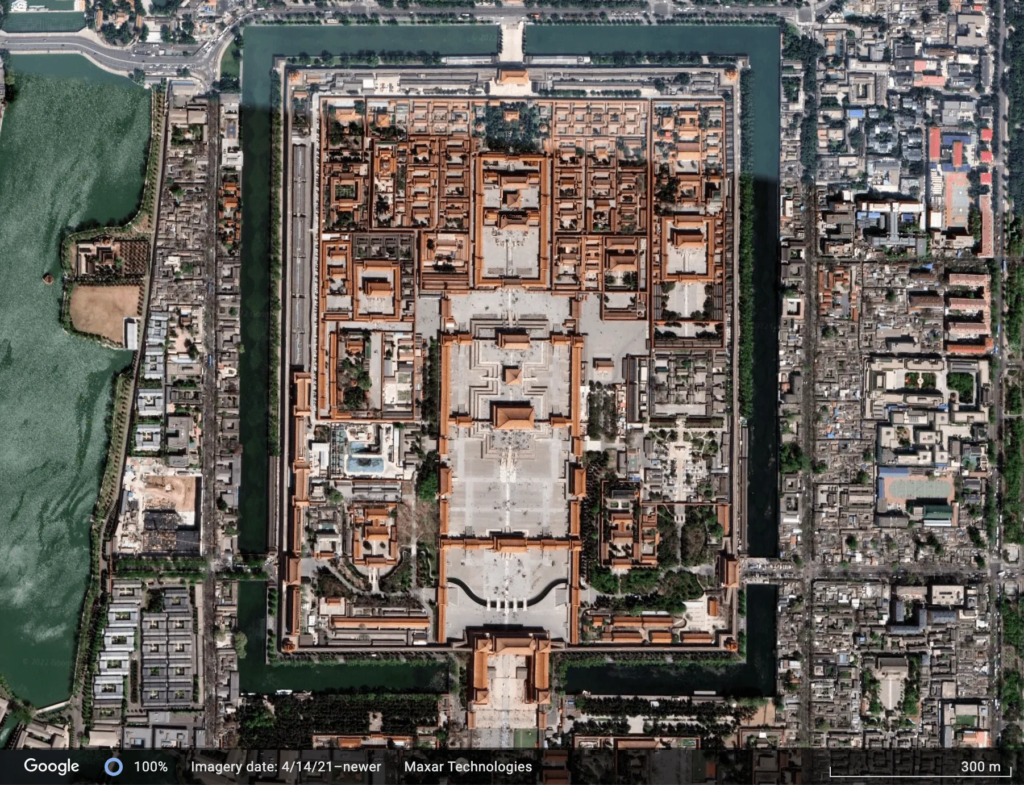
The Forbidden City is located in the center of Beijing, directly north of Tiananmen Square. The exact address is 4 Jingshan Front St, Dongcheng District, Beijing, China. It is easily accessible via public transport:
- By Subway: The most convenient way to reach the Forbidden City is by taking Beijing Subway Line 1 and getting off at the Tiananmen East or Tiananmen West stations. From there, it’s a short walk to the entrance.
- By Bus: Several bus lines stop near the Forbidden City. You can take buses numbered 1, 2, 52, or 82 to Tiananmen Square, or buses 5, 58, 101, 103, or 109 to the Forbidden City directly.
- By Taxi: If you prefer a taxi, ensure that you clearly specify “Forbidden City” to avoid confusion, as Beijing has many significant historical sites.
2. Admission Prices and Hours
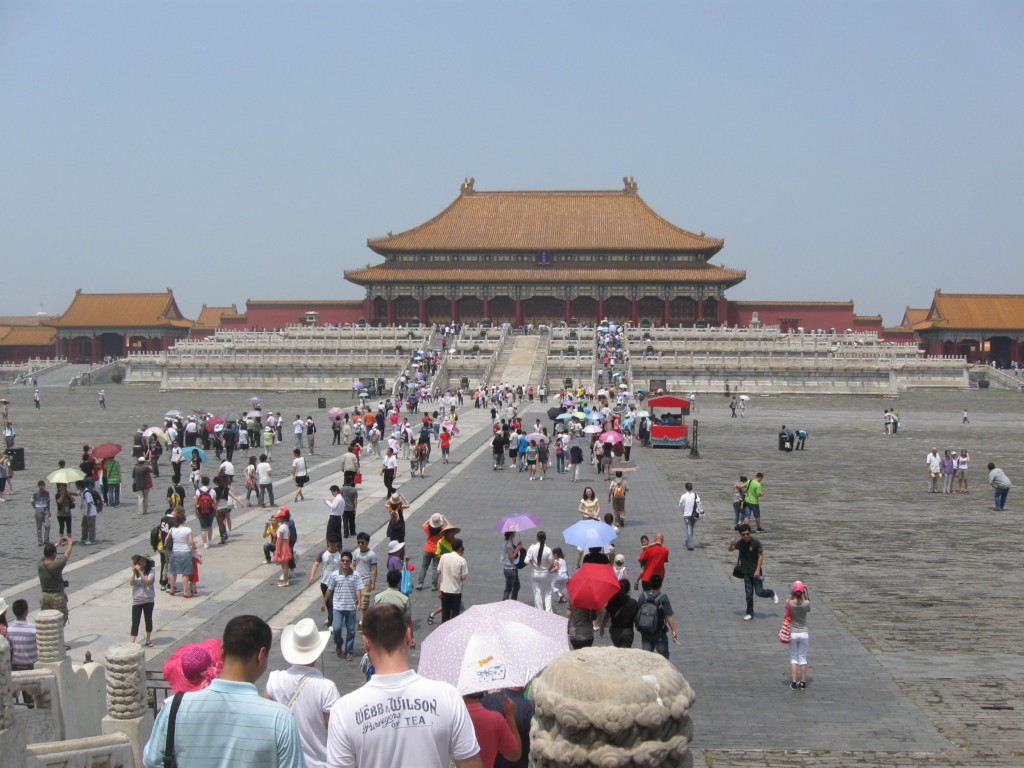
Admission fees for the Forbidden City vary depending on the season:
- Peak season (April to October): ¥60 (approximately $9)
- Off-peak season (November to March): ¥40 (approximately $6)
- If you wish to visit the Treasures Gallery and the Clock Exhibition Hall, which are housed inside the Forbidden City, there is an additional charge of ¥10 each (about $1.50).
Children under 1.2 meters in height and senior citizens over 60 years old can enter for free or at discounted rates. Valid identification is required for the discount.
Operating Hours:
- From April to October: 8:30 AM to 5:00 PM (last entry at 4:00 PM)
- From November to March: 8:30 AM to 4:30 PM (last entry at 3:30 PM)
Please note that the Forbidden City is closed every Monday (except during national holidays).
3. Ticket Booking and Entry Procedures

The Forbidden City has strict limits on the number of daily visitors, capping entry at 80,000 per day. To ensure you can visit, it’s highly recommended that you book your tickets in advance online through the official Palace Museum website or through authorized third-party platforms. You will need to provide your passport number when purchasing tickets.
Upon arrival, you’ll need to present your passport for identity verification before entering the Meridian Gate. The entire process is straightforward, but during peak tourist seasons, it’s advisable to arrive early to avoid the long queues.
Key Sections of the Forbidden City to Explore

While the Forbidden City is vast and it would take days to explore every corner in detail, several key sections should not be missed. Each offers a unique insight into the life of the emperors and the grandeur of Chinese imperial culture.
1. The Meridian Gate (Wu Men)
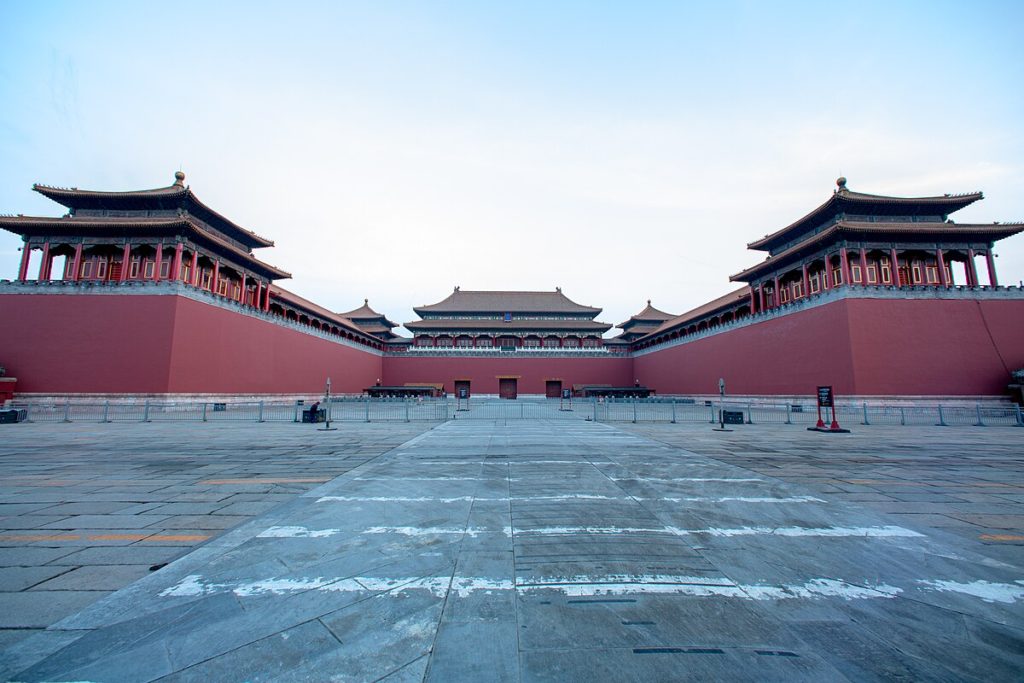
The Meridian Gate serves as the main southern entrance to the Forbidden City and is often the first glimpse visitors get of the palace’s splendor. This imposing structure features five arches, with the central arch reserved exclusively for the emperor. Historically, the Meridian Gate was also used for significant state ceremonies and the announcement of imperial decrees.
2. The Hall of Supreme Harmony (Taihe Dian)
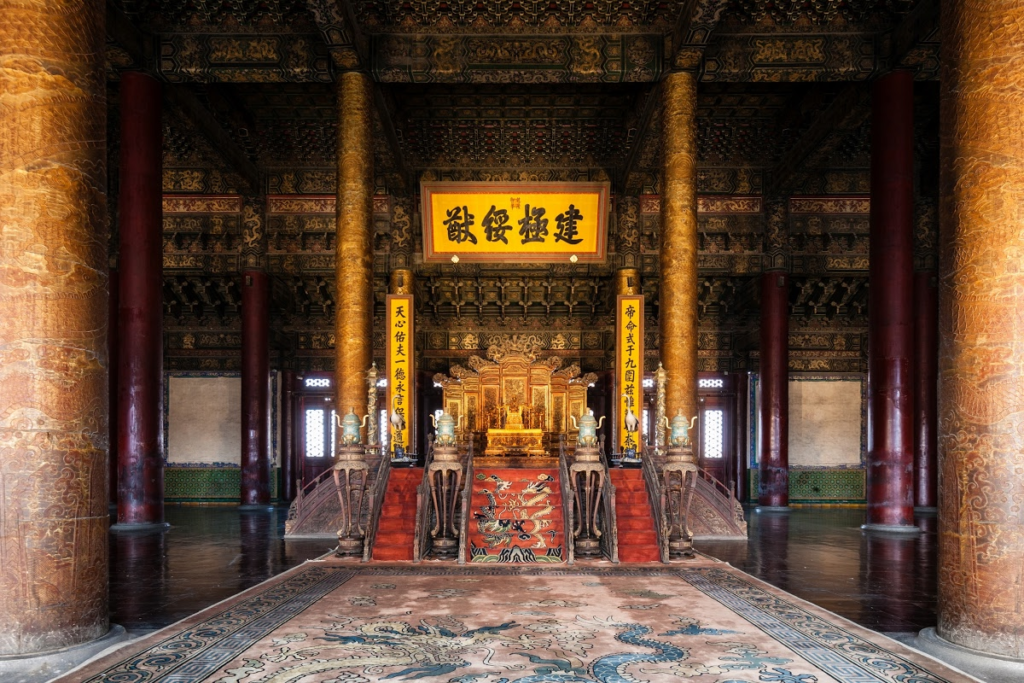
As the largest hall in the Forbidden City, the Hall of Supreme Harmony is where emperors held court, conducted state affairs, and celebrated major festivals. The hall is elevated on a massive marble terrace and is adorned with intricate dragon motifs, symbolizing the emperor’s divine power. This building is one of the most recognizable symbols of imperial China.
3. The Hall of Central Harmony (Zhonghe Dian)
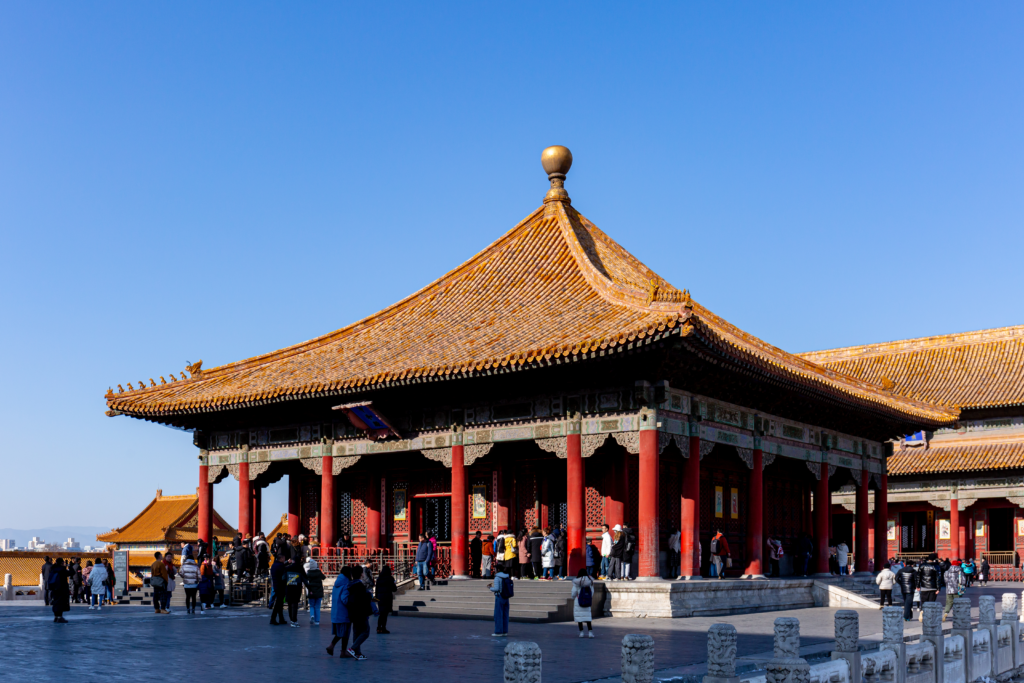
Located directly behind the Hall of Supreme Harmony, the Hall of Central Harmony is smaller but equally significant. This was a resting place for the emperor before major ceremonies. The hall is filled with historical artifacts and symbolic decorations that further emphasize the emperor’s authority.
4. The Hall of Preserving Harmony (Baohe Dian)
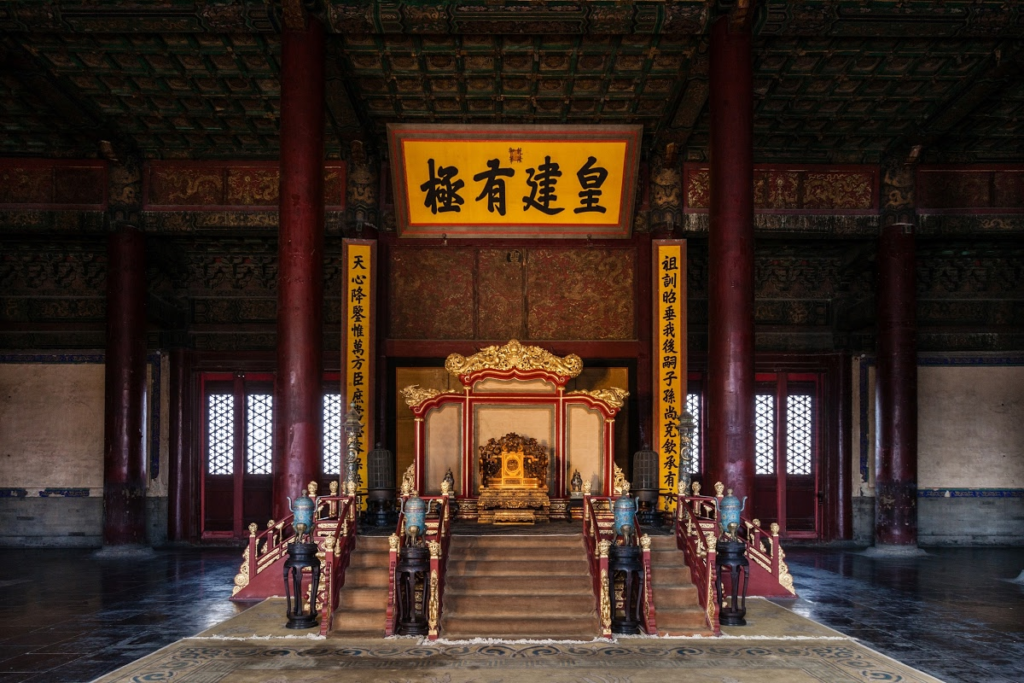
The Hall of Preserving Harmony was used for imperial banquets and important state functions. One of its most fascinating aspects is the imperial throne, which is positioned on a platform and framed by columns carved with dragon designs. Visitors often find this hall awe-inspiring due to its grandeur and historical significance.
5. The Palace of Heavenly Purity (Qianqing Gong)
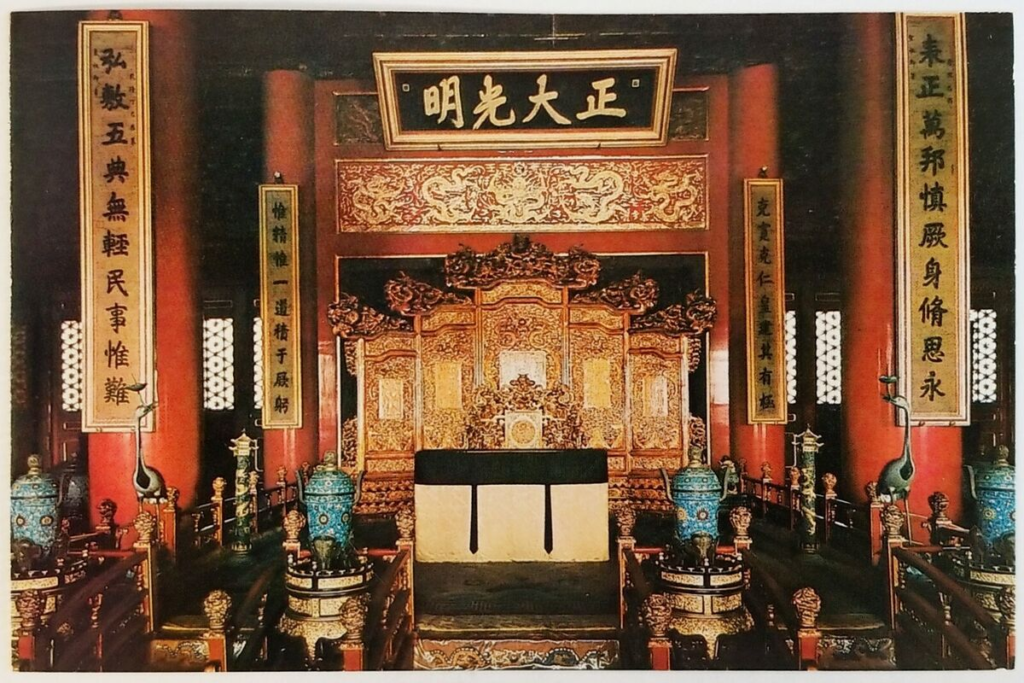
This palace served as the emperor’s residence during the Qing Dynasty. The Palace of Heavenly Purity is part of the Inner Court and offers visitors a glimpse into the personal lives of the emperors. The emperor would handle daily affairs here, and the decoration reflects the luxurious lifestyle of imperial rulers.
6. The Imperial Garden

Located at the northern end of the Forbidden City, the Imperial Garden is a beautiful space filled with pavilions, ancient trees, and rock formations. It served as a tranquil retreat for the emperor and his family. The garden’s design reflects the harmonious balance between man and nature, a central theme in traditional Chinese philosophy.
Visiting Tips and Practical Advice
Visiting the Forbidden City can be an overwhelming experience due to its sheer size and the number of tourists, especially during peak travel seasons. Below are some tips to help you make the most of your visit:
1. Plan for a Full Day
The Forbidden City is massive, and to truly appreciate its grandeur and history, plan to spend at least 3-4 hours exploring. If you’re particularly interested in the Treasures Gallery or other exhibitions, you may need a full day. Be sure to pace yourself, wear comfortable shoes, and bring water, especially during the summer months.
2. Best Time to Visit
The best time to visit the Forbidden City is either early in the morning when it opens or later in the afternoon to avoid the large midday crowds. Spring (April-May) and autumn (September-October) are the ideal seasons to visit, as the weather is mild and the skies are usually clear. Avoid visiting during Chinese public holidays, such as Golden Week (early October), as the Forbidden City will be incredibly crowded.
3. Audio Guides and Tours
For a more informative experience, consider renting an audio guide or joining a guided tour. The Forbidden City offers multilingual audio guides for ¥40 ($6), available at the entrance. Alternatively, English-speaking tour guides can be hired for a more personalized experience, and
prices generally range from ¥200 to ¥500 ($30-$75) depending on the length and depth of the tour.
4. Nearby Attractions
After visiting the Forbidden City, consider exploring other nearby attractions. Tiananmen Square, the world’s largest public square, is just south of the palace. You can also visit Jingshan Park, located directly behind the Forbidden City, where you can climb to the top of Jingshan Hill for an incredible panoramic view of the palace complex.
Statistics and Tourism Facts
- The Forbidden City covers an area of 72 hectares (180 acres).
- It has 980 buildings with over 9,000 rooms.
- The Forbidden City welcomes around 14 million visitors annually, making it one of the most visited museums in the world.
- The daily visitor limit is set at 80,000 to ensure a more controlled and manageable experience for tourists.
By following the practical advice outlined in this guide and planning your visit carefully, you’ll be able to fully immerse yourself in the grandeur of one of the world’s most iconic historical landmarks.
Read more: Top 7 Cities Must Visit in China








